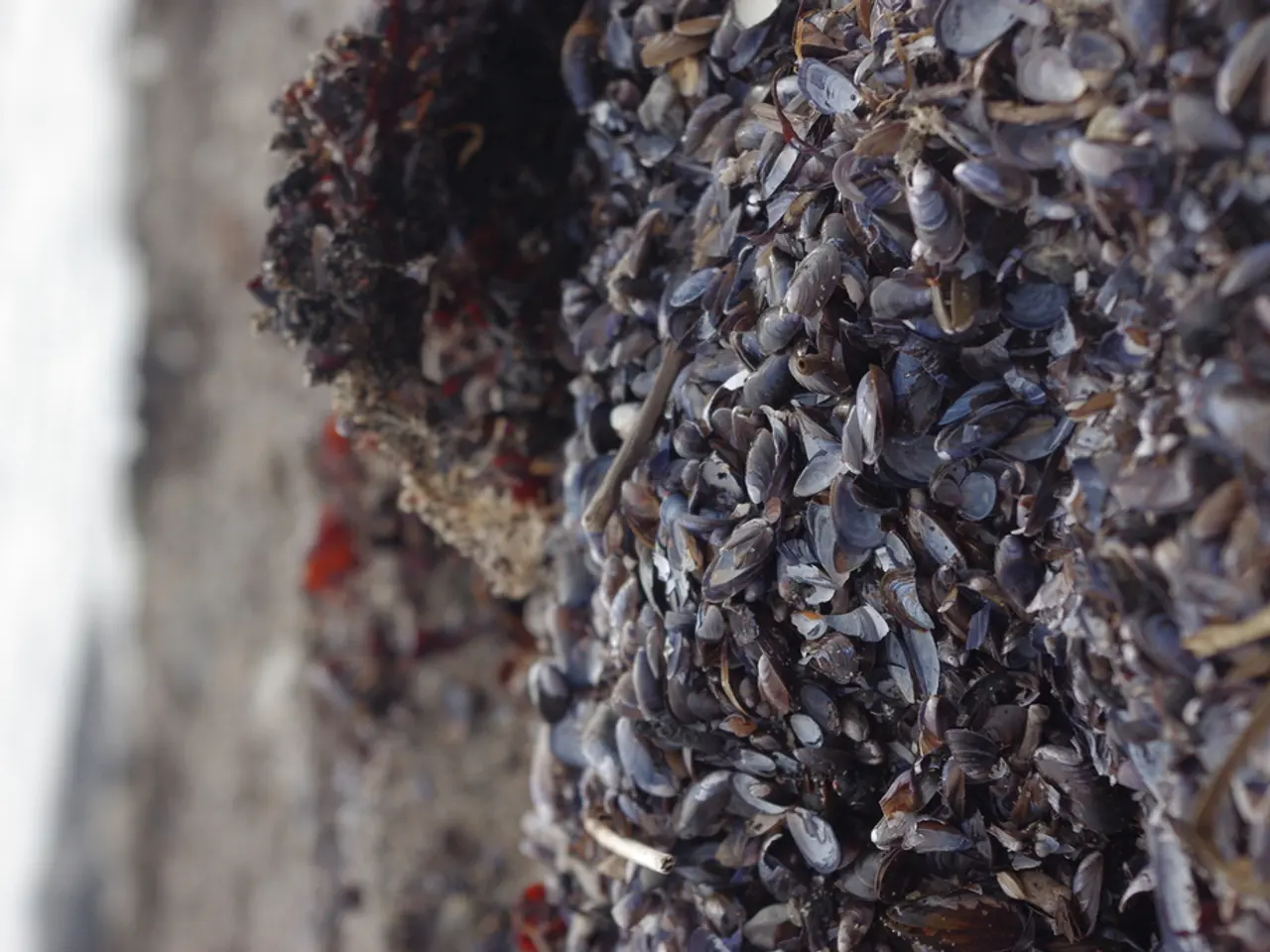Unveiling the Kenneth K. Chew Center, dedicated to advancing Shellfish Research and Restoration
A New Era for Oyster Restoration in Puget Sound
The shores of Washington state's Kitsap Peninsula are home to a significant development: the Manchester Research Station, which is set to play a crucial role in the restoration of native Olympia oyster populations and the expansion of shellfish habitat in Puget Sound.
The research station, equipped with a modern shellfish hatchery, is poised to produce up to 6 million "spat-on-shell" oysters and 2 million oyster "singles" annually. This new facility, named the Kenneth K. Chew Center for Shellfish Research and Restoration, is a testament to the state's commitment to expanding shellfish aquaculture and increasing the availability of locally-produced seafood.
The hatchery includes a 600 square-foot outdoor tank farm for setting oysters on "spat-on-shell", a 630 square-foot greenhouse nursery for growing shellfish and microalgae, and a 20' x 8' floating upwelling system for oyster grow-out (singles). It will also supply 150 gallons of filtered seawater per minute from adjacent Clam Bay.
Collaborative research goals at the Manchester Research Station include culturing genetically-diverse native oysters, expanding shellfish habitat restoration, advancing shellfish aquaculture technology, understanding ocean acidification impacts, and improving monitoring.
NOAA has signed a formal agreement with the Puget Sound Restoration Fund for collaborative research and restoration activities. The Puget Sound Restoration Fund, a Washington-based nonprofit organization, restores marine habitat, water quality, and native species in Puget Sound. It will provide restoration-grade Olympia oyster larvae and seed to the restoration community throughout Washington State.
The new shellfish hatchery is part of Washington State's Shellfish Initiative, launched in December 2011 to expand shellfish aquaculture and increase the availability of locally-produced seafood. The initiative aims to promote and expand aquaculture, increase opportunities for recreational shellfish harvesting, protect water quality, and restore native shellfish habitat and populations.
The 10-year plan for rebuilding native Olympia oyster populations in Puget Sound and restoring 100 acres of oyster habitat by 2020 focused on habitat restoration through placement of clean oyster shells and spat-on-shell (juvenile oysters attached to shells) to enhance oyster populations. Significant efforts included deploying hundreds of thousands of clean oyster shells and spat in South Puget Sound and other locations to foster oyster growth and habitat recovery.
Key partners in Puget Sound restoration efforts include Jefferson County, the Puget Sound Partnership, the Washington Department of Fish and Wildlife, conservation groups like the Wild Fish Conservancy and The Conservation Angler, and others. These organizations have been instrumental in implementing and supporting the restoration in Puget Sound.
While there is evidence of ongoing habitat restoration around 2025 using oyster shells and spat, the original 10-year plan seems to have evolved into continued, incremental restoration efforts through partnerships across government and conservation bodies. Despite this shift, the rebuilding plan emphasized large-scale shell and spat placement to restore oyster populations and habitat over a decade.
Washington State's tidelands have been productive farm beds for nutritious oysters, clams, and mussels for over 150 years. The Pacific Northwest shellfish industry adds an estimated $270 million a year to the region's economy and employs more than 3,200 people, primarily in coastal communities. The new shellfish hatchery at the Manchester Research Station is set to contribute significantly to this industry and the ongoing efforts to restore and protect Puget Sound's shellfish populations.
[1] Rebuilding Native Olympia Oysters in Puget Sound
[2] Olympia Oyster Restoration Project
[3] Puget Sound Partnership
[4] Jefferson County
[5] Wild Fish Conservancy
[6] The Conservation Angler
[7] Aquaculture Industry Advancement in Washington State
[8] Manchester Research Station's Role in Climate Change Mitigation
[9] Understanding Ocean Acidification Impacts on Shellfish
[10] Health-and-wellness Benefits of Locally-produced Seafood
[11] Investing in Fitness and Exercise Through Shellfish Aquaculture
[12] Weather and Climate Change's Impact on Travel and Tourism in the Pacific Northwest
[13] Data-and-Cloud-Computing: Monitoring Puget Sound's Restoration Efforts
[14] Education-and-Self-Development: Learning about Shellfish Aquaculture and Environmental Science
[15] Lifestyle: Embracing Sustainable Seafood and Supporting Local Businesses
[16] Shopping: Purchasing Aquaculture-produced Food and Drink
[17] Energy Efficiency in Shellfish Aquaculture Operations
[18] Real-Estate Values and Shellfish Aquaculture Zones
[19] Career Opportunities in the Expanding Shellfish Aquaculture Industry
[20] Sports: Fishing for Native Olympia Oysters in Puget Sound
[21] Gambling Revenues, Casino-and-Gambling Legislation, and Shellfish Aquaculture
[22] Oyster Restoration's Impact on Food Safety and Public Health
[23] Tech Advancements in Shellfish Aquaculture: The Role of Technology in Culturing Genetically-diverse Native Oysters
[24] Financial Incentives for Shellfish Habitat Restoration and Industry Expansion.




